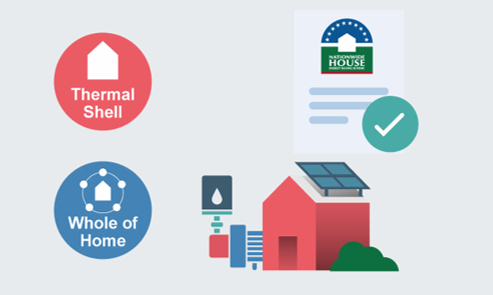
The established NatHERS Star Rating scheme has been expanded to include a ‘Whole of Home’ energy assessment. This is now in force in the Australian National Construction Code (NCC). It is a holistic approach including energy use, as well as solar power generation and storage.
The purpose of the new NatHERS Star Rating scheme is to:
- Reduce energy bills
- Reduce carbon emissions
- Improve thermal comfort
This ties into the Australian Government’s National Energy Performance Strategy to reduce energy use in homes, business and industry. It helps Australia achieve the net zero carbon emissions goal by 2050.
Energy Efficiency
The ‘Whole of Home’ energy assessment uses a rating scale ranging from 0 to 100 where 100 is world-leading performance. Your new build must have a minimum Whole of Home rating of 60 out of 100.
Also, your minimum Star Rating has increased from 6 to 7. This is now a requirement of the National Construction Code in Australia.
Clearly, your new build must be energy efficient and have energy efficient appliances from now on.
Power Use
Your ‘Whole of Home’ Energy Assessment includes your major appliances:
- Heating and cooling
- Hot water
- Pool and spa pumps
- Cooking and plug-in appliances
- Lighting
- Solar power generation
- Battery storage
Click here for advice: Home Energy Advice
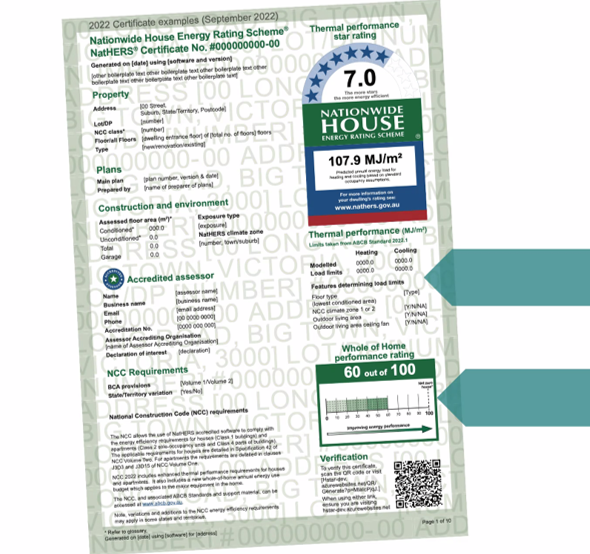
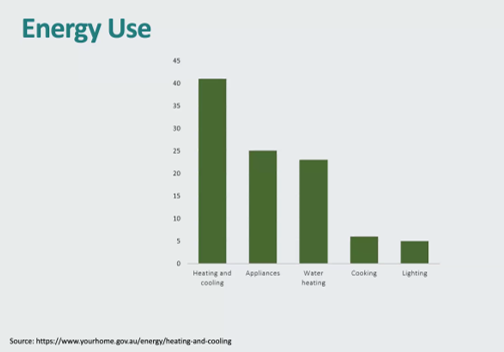
Heating, Cooling and Hot Water
The most important appliances affecting your ‘Whole of Home’ energy assessment are heating, cooling and hot water. Choose these appliances carefully because they account for around 40% and 23% of your annual power demand, respectively.
Air-sourced heat pumps and air conditioners deliver 3 to 5 times more space heating or cooling energy than they consume in power. This is similar for heat pump water heaters. Therefore, they provide a major boost to your ‘Whole of Home’ rating.
Another advantage is that they don’t need to be exposed to sunshine radiation because they transfer heat directly to or from the outside air. They can be installed on the ground, wall, roof, or on the southern side of your house.
However, solar water heaters require sunshine radiation, so they are typically installed on roofs, which reduces available space for solar panels.
Air Conditioning
A new Energy Rating Label was introduced for residential air conditioners in April 2020. This label shows energy ratings for 3 different climate zones across Australia:
- Hot (Northern Australia)
- Average (Central Australia)
- Cold (Southern Australia)
Most of Victoria has a Cold climate rating apart from the northwest corner, which has an Average climate rating. The rated cooling and heating capacities of the air conditioner are shown at the top of the label (kW). The estimated annual electricity consumption for both cooling and heating is also shown for each of the climate zones on the right-hand side of the label.
Read more: Best Air Conditioning Systems
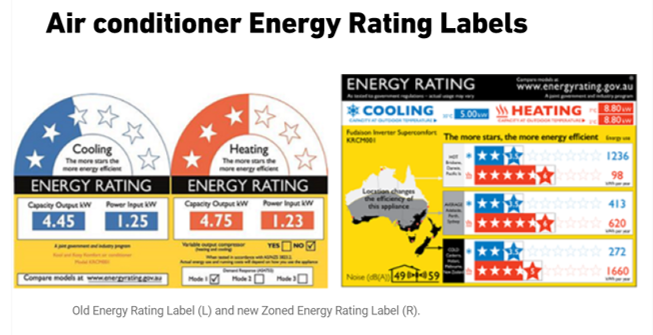
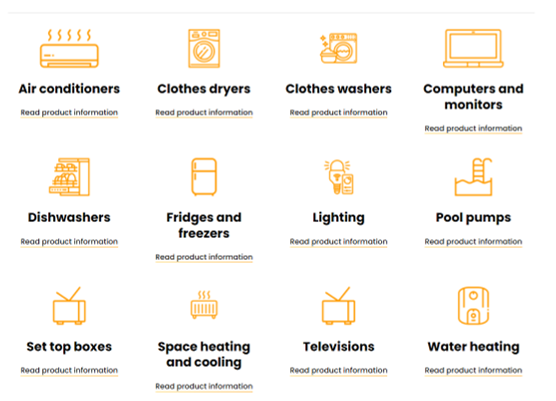
Plug-in Appliances
Other plug-in appliances such as microwaves, fridges, dish washers, washing machines and dryers also consume a lot of power. Choose appliances with high star ratings. If you can, schedule them to run during day when you are generating solar power.
Most major household appliances have energy rating labels to make product comparison easy. These include:
- Air conditioners
- Clothes dryers
- Washing machines
- Computers and monitors
- Dishwashers
- Fridges and Freezers
- Lighting
- Pool Pumps
- Televisions
- Reverse cycle air conditioners (but not hydronic heat pumps)
- Gas water heaters (but not electric element, solar or heat pumps)
Pool and Spa Pumps and Cleaning Systems
Pool and spa filtration represents 70 to 90% of the power use for your pool, excluding heating. This is why it has been included in the Whole of Home assessment. The Star Rating software includes the following 3 options with increasing power efficiency:
- Single speed
- Dual speed
- Multi speed
There are also 3 pool cleaning options with increasing power efficiency:
- Pressure cleaner with main filter pump
- Pressure cleaner with booster pump
- Robotic system
Read more: Fix Green Pool Water
Cooking Appliances
The Star Rating software includes the following options for cooking appliances with increasing energy efficiency:
Cooktop:
- Electric element
- Gas
- Electric induction
Oven:
- Electric element
- Gas
Lighting
Power use is calculated automatically by the Star Rating software. It is based upon your floor area and an assumption about lighting efficiency and use. It assumes that the lighting specified meets the relevant provisions of the construction code.
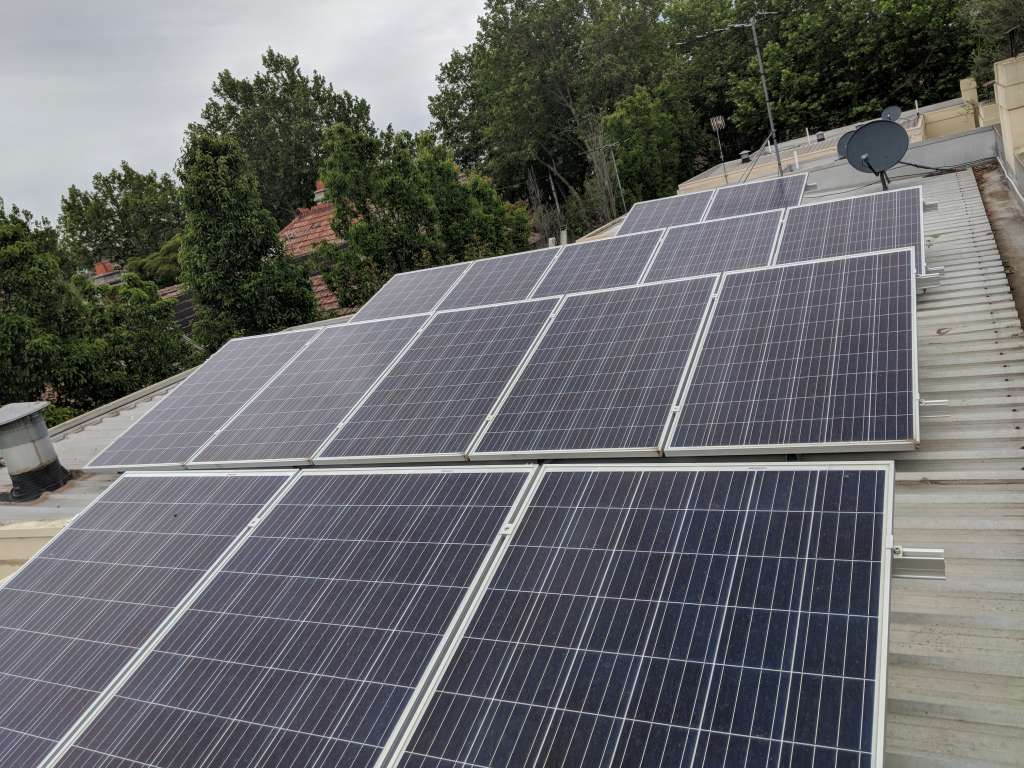
Solar Power
Solar power and battery storage are two other important aspects of your Whole of Home Energy Assessment. The Star Rating software takes account of the following 4 aspects or your home solar power array:
- The slope of your panels
- The size of your system
- The direction that your system faces
- The time period that your system provides power
Batteries help by shifting the availability of your power supply to a time that more closely matches your power use. Also, choose to run discretionary appliances during the day rather than at night.
Read more: Managing Your Solar Power
Contact Hydrosol to explore your design options.
